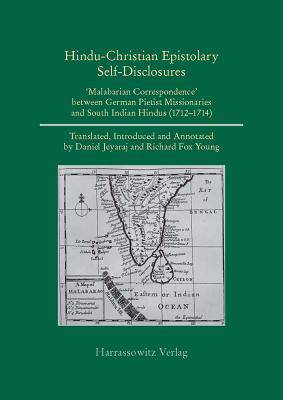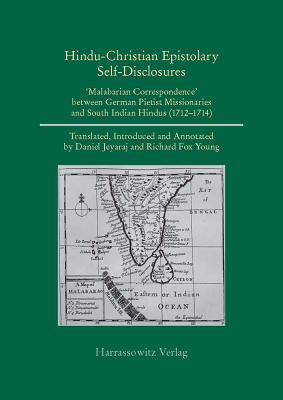
- Afhalen na 1 uur in een winkel met voorraad
- Gratis thuislevering in België vanaf € 30
- Ruim aanbod met 7 miljoen producten
- Afhalen na 1 uur in een winkel met voorraad
- Gratis thuislevering in België vanaf € 30
- Ruim aanbod met 7 miljoen producten
Zoeken
Hindu-Christian Epistolary Self-Disclosures
'Malabarian Correspondence' Between German Pietist Missionaries and South Indian Hindus (1712 - 1714)
Hardcover | Engels, Duits
€ 130,95
+ 261 punten
Omschrijving
This volume presents for the first time a complete English translation of all 99 Tamil Letters gathered and translated into German by the early Lutheran Pietist missionaries to India, namely Bartholomaus Ziegenbalg (1682-1719) and his colleague Johann Ernst Grundler (1677-1720). They attempted to help their European readers to en-gage with what Tamil people said of themselves, their history, litera-ture, religions, women, children, agriculture and the like. The mis-sionaries disclosed their theological and missiological intentions to the Tamils. The Tamils, in turn, did not accept them uncritically. They sent written responses to their inquiries in which they disclosed their deepest loyalties and practical priorities that gave them meaning, purpose, and satisfaction. The missionaries believed that the more European readers would familiarize themselves with the worldviews and customs of the Tamil peoples, the more appreciation, care, and concern they would have for their own religious institutions and cul-tural symbols. This kind of cross-cultural impact has very few paral-lels in the 18th century. These Tamil Letters are now nearly 300 years old; yet they have retained their authentic freshness. Modern readers can still dis-cern, though faintly, Tamil voices and interactions with Europeans and European attitudes towards the Tamils. Even today, this kind of Hindu-Christian self-disclosure, in an atmosphere of mutual trust and friendship, may have relevance for the ways in which we try to pro-mote better understanding between people of different faith commu-nities living and working in our own neighborhoods. The Tamil Letters are given in translation with rich annotations and explana-tions.
Specificaties
Betrokkenen
- Vertaler(s):
- Uitgeverij:
Inhoud
- Aantal bladzijden:
- 349
- Taal:
- Engels, Duits
Eigenschappen
- Productcode (EAN):
- 9783447068444
- Verschijningsdatum:
- 1/02/2013
- Uitvoering:
- Hardcover
- Formaat:
- Genaaid
- Afmetingen:
- 170 mm x 239 mm
- Gewicht:
- 1019 g

Alleen bij Standaard Boekhandel
+ 261 punten op je klantenkaart van Standaard Boekhandel
Beoordelingen
We publiceren alleen reviews die voldoen aan de voorwaarden voor reviews. Bekijk onze voorwaarden voor reviews.







